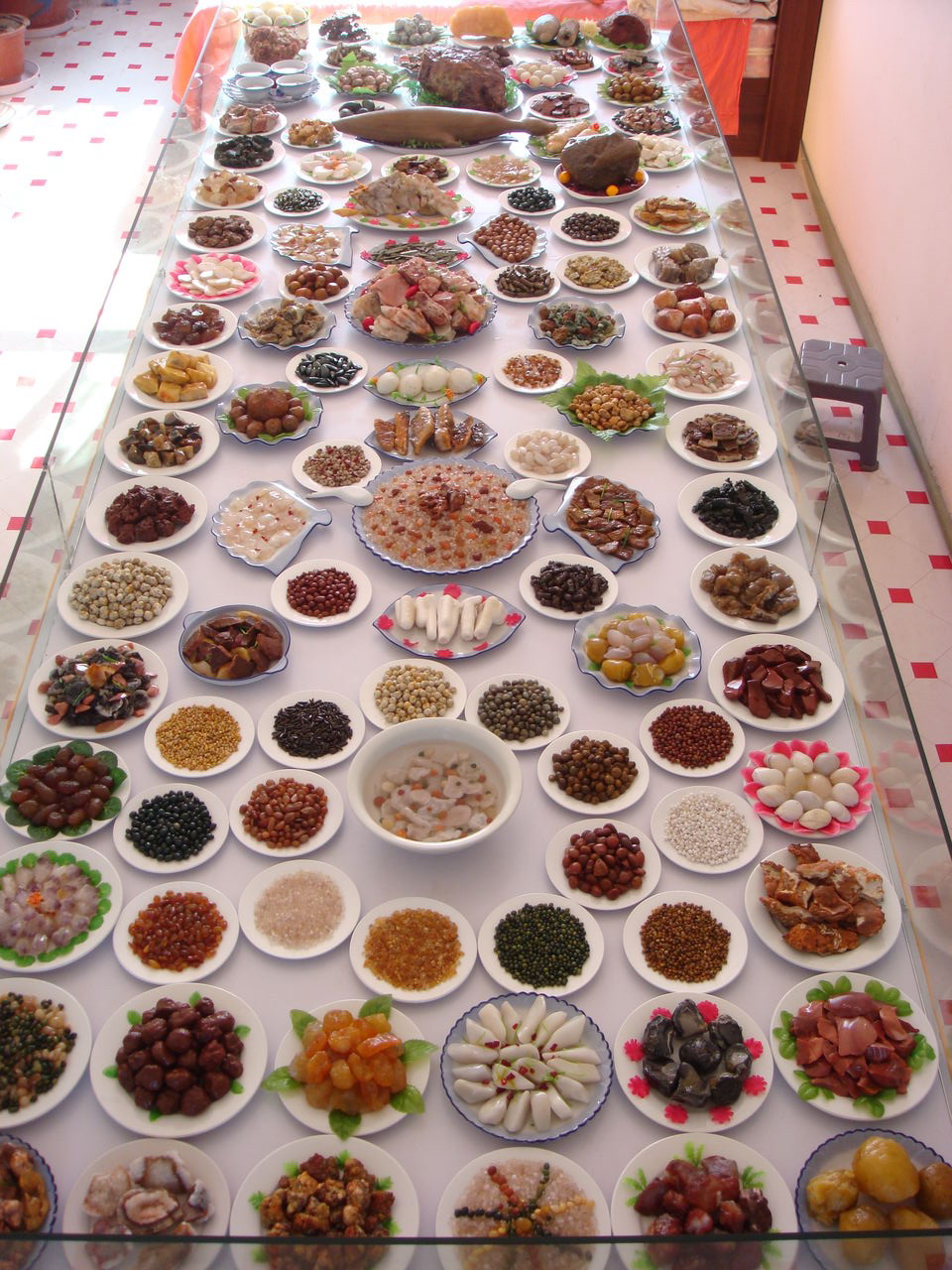
The development and diversity of Chinese cuisine are also representative of China's long history. In each dynasty new recipes were created until the art of food preparation reached its peak during the Qing Dynasty (1644 - 1911). The dinner called Man Han Quan Xi that incorporated all the very best of Man and Han Cuisine, which are held in high esteem involving as it made countless dishes, each with their own distinctive flavors and appeals. This veritable banquet in its preparation and presentation represent all of the culture and culinary arts that have been perfected over centuries.
Eight Cuisines: The diversity of geography, climate, costumes and products have led to the evolution of what are called the 'Four Flavors' and 'Eight Cuisines' but as catering is a living art sub-classifications continue to increase. For example in each field of cuisine, adept chefs can utilize something as simple as a melon to create dozens of dishes with dozens of flavors. Meanwhile, local specialties and snacks with their origins steeped in the mists of time are also an important progeny and indicate a profound philosophy and taste. As well as the cuisine of the majority Han people, the many minorities have their own fantastic traditions.
Cuisine in China is a harmonious integration of color, redolence, taste, shape and the fineness of the instruments. For the cooking process, chefs pick various ingredients and seasonings while employing unparalleled complicated skills handed down from their families, ever aspiring to their ideal of perfection for all the senses. Among the many cooking methods they use are boiling, stewing, braising, frying, steaming, crisping, baking, and simmering and so on. When they finish their masterpieces, they are arranged on a variety of plates and dishes so that they are a real pleasure to view, to smell and ultimately to savor. The facility to partake these delights is also distinctive - chopsticks.